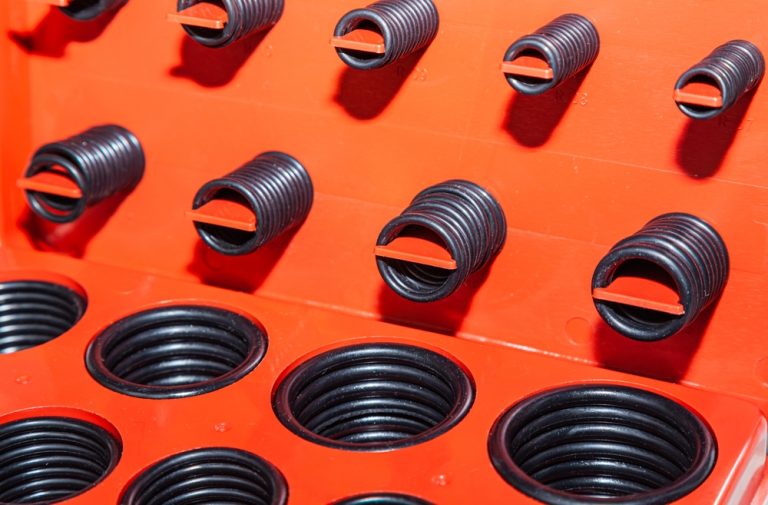Coatings and lubricants can increase the life of your O-rings and boost their performance. But with so many options out there, it can be overwhelming to choose the best lubricant for your O-rings.
EZ Coating knows choosing a suitable lubricant is crucial for your application’s success.
Finding the Right Lubricant
Selecting the appropriate lubricant for your O-ring is key.
The first thing you need to consider is the material of your O-ring and the surfaces it contacts. Some lubricants work better with specific materials, and using the wrong one can lead to damage or degradation.
Different lubricants also have temperature limitations. If your O-ring operates in extreme temperatures, you’ll need a lubricant to handle the heat or cold without breaking down.
Another consideration is chemical compatibility. If your application involves chemical exposure, you’ll need a lubricant to resist chemical degradation. Check the compatibility charts to ensure it won’t break down in the presence of the substances your O-ring will encounter.
Consider the load and speed at which your O-ring operates. Lubricants can vary in their ability to withstand high loads or high-speed rotations.
Some lubricants are easier to apply than others. Consider whether you need to apply manually or if you require an automated application process.
Finally, consider how often you can or want to reapply the lubricant. Some lubricants have longer-lasting properties, reducing the frequency of maintenance.
How Does Lubricating O-rings Help Them Seal?
Lubricating O-rings is a common practice that helps improve their sealing performance. This process enhances their overall performance and lifespan, ensuring they provide reliable sealing.
Applying lubricant to O-rings makes them seal better:
Reduced Friction
The primary function of lubricant is to reduce the friction between the O-ring and the surfaces or components it closes against. When O-rings have less friction to overcome, it becomes easier for them to slide into position, creating a better seal. Lower friction also reduces the risk of the O-ring getting damaged during installation.
Improved Conformity
Lubricant can enhance the O-ring’s ability to conform to irregularities and imperfections in the sealing surfaces. This is particularly important in applications where the surfaces are not perfectly aligned. The lubricant helps the O-ring adapt to these imperfections, ensuring a more effective seal.
Prevention of O-Ring Damage
Without lubrication, O-rings can experience excessive wear and damage during the sealing process, especially when they are exposed to high levels of friction. Lubricants act as a protective barrier, reducing the risk of abrasion and extending the O-ring’s lifespan.
Related Post: 5 Keys to O-Ring Preservation in Your Industrial Equipment
Enhanced Seal Integrity
By reducing friction and preventing damage, lubricant helps maintain the integrity of the O-ring seal over time. This means the seal remains effective and leak-free, even in applications with repetitive or dynamic movements.
Temperature Resistance
Some lubricants are specially formulated to withstand extreme temperatures, making them suitable for applications where O-rings operate in either very hot or cold environments. In these cases, the lubricant ensures that the O-ring remains pliable and functional despite temperature fluctuations.
Chemical Resistance
Certain lubricants are designed to resist chemical exposure. When O-rings are used in applications where they come into contact with aggressive chemicals or solvents, a chemically resistant lubricant can protect the O-ring from degradation and ensure long-lasting sealing performance.
Reduced Stick-Slip
Lubricants can help mitigate stick-slip, where the O-ring repeatedly sticks and slips due to high friction. This can cause instability in some applications.
Prevention of Galling:
Galling, a form of wear that occurs when two metal surfaces rub against each other, can be a concern in metal-to-metal sealing applications. Lubricants provide a protective layer that reduces the risk of galling and extends the life of the O-ring and other components.
Ease of Installation
Lubricated O-rings are easier to install, making the assembly process more efficient. This is especially beneficial in high-production environments where speed and accuracy are essential.
Understanding the Difference Between Lubricants and Coatings
Lubricants are substances that reduce friction and allow smoother movement between the O-ring and another surface. They come in various forms, including greases, oils, and dry film lubricants. Choosing the right product depends on your specific application and the materials involved.
Related Post: O-Ring Coating FAQS
Coatings, on the other hand, are more like protective shields for your O-rings. They’re applied to the O-ring’s surface and can offer enhanced durability, chemical resistance, and wear protection. Coatings can be especially useful in demanding applications where the O-ring is subjected to harsh environments or abrasive conditions.
O-Ring Surface Treatments by EZ Coating
Our O-ring coatings outperform PTFE in several important factors. Contact us for more information or if you need a test sample. We’ll respond within 24 hours and then discuss your requirements.
We understand that not every application is the same, and our team is ready to guide you through the selection process.

